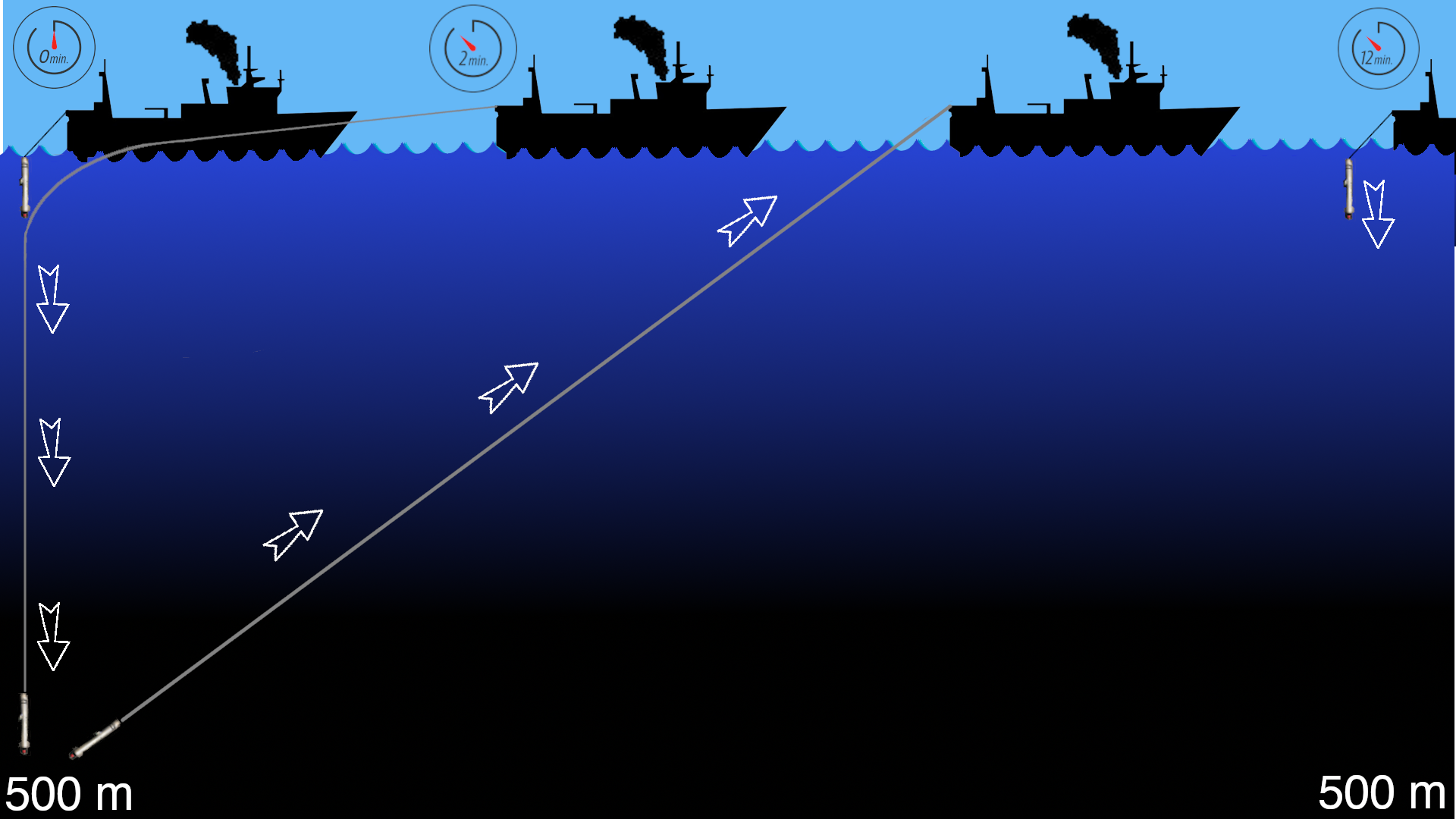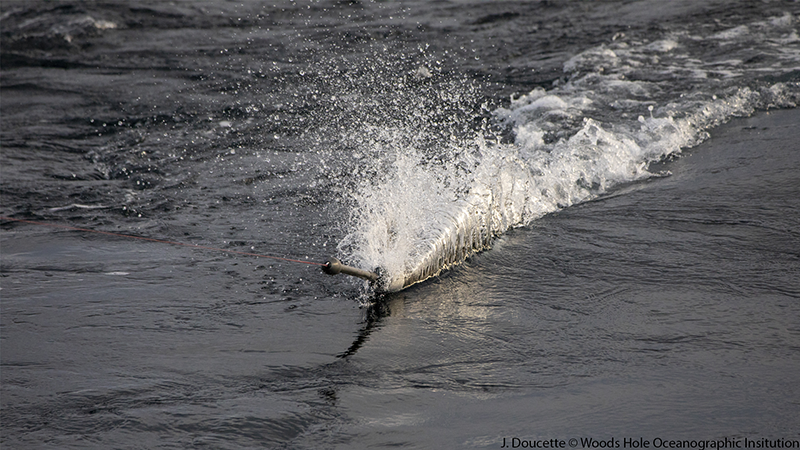
The objective of the EcoCTD Open Project is to freely provide all the necessary technical information and resources for anyone to make an EcoCTD in their own lab. This includes 3D design files for each parts to be manufactured locally, a list of all the necessary hardware and tools, a step-by-step instruction list on how to manufcture and assemble an EcoCTD. It also includes guidance in data processing to make the best of the high-resolution data an EcoCTD is capable of collecting. Most importantly, the EcoCTD Open Project aims at establishing inter-disciplinary connections in the field of oceanography by coupling physical and bio-optical measurements. The ultimate goal is for the user community to participate in the Open Project by contributing knowledge, design modifications and improvments, and experiences to further enhance the EcoCTD's capabilities.
If you questions or suggestions, please reach out, we would be happy to chat!
The EcoCTD
The EcoCTD is an underway profiler: it samples through the water column while the ship is moving. It was developed to address the need for an inexpensive, versatile, and easily-deployable instrument capable of profiling biophysical properties at a sub-kilometer lateral resolution over large distances. The table below provides a quick comparison of the EcoCTD with other commonly used underway profilers (grey = towed bodies, blue = free-falling profilers).
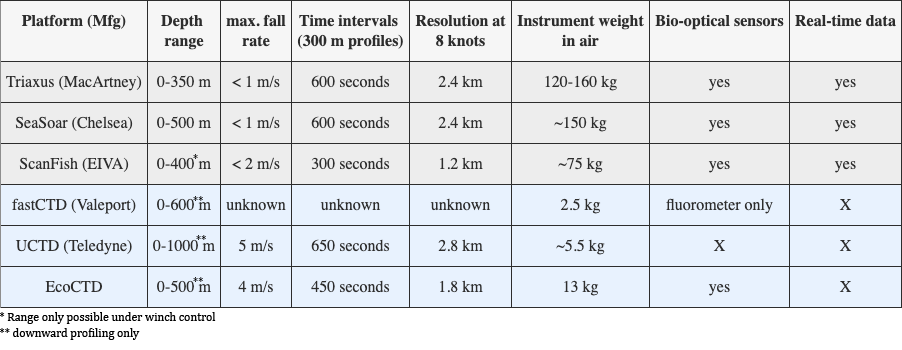
What does it measure?
The EcoCTD integrates three sensors to measure
- Conductivity, temperature, and pressure (CTD)
- Dissolved oxygen concentration (ODO)
- Chlorophyll-F and backscatter (ECOPuck)

The EcoCTD is based on an RBRConcerto3 that not only measures conductivity, temperature, and pressure, but also acts as a battery pack (8xAA) and logger.
Two types of fast-response Optical Dissolved Oxygen (ODO) sensors are currently implemented: the JFE Rinko III, or the RBRcoda3 T.ODO
Both have a 1 s time constant and log temperature measured at the location of the foil on the optode. The Rinko III samples at 8 Hz, while the RBRcoda3 T.ODO samples at 1 Hz.

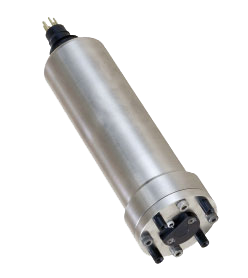
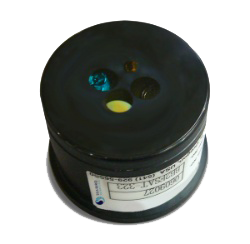
A WetLabs ECOPuck originally designed for AUVs is integrated into the EcoCTD. The characteristics of the channels on the ECOPuck can be customized. Typically, the ECOPuck is selected to have three channels: chlorophyll, backscatter at 470 nm and backscatter at 700 nm.

Sampling characteristics
the EcoCTD presents key features relevant to underway sampling
- A high-sampling rate and short response-time: All sensors sample at 8 Hz, and the CTD is equipped with a fast-response thermistor (<0.1 s)
- A consistent profiling rate: The EcoCTD profiles at a speed between 3 amd 4 m/s. High-frequency variability in profiling speeds in small compared to the UCTD (Rudnick and Klinke, 2007). A linear slow-down with depth, due to increasing line drag (~1 m/s for every 300 m) is observed.
- A vertical, free-falling behavior: Motion packages were instaled on the ship"s deck as well as on the EcoCTD to investigate profiling behavior. The probe was proven to be decoupled from the ship's motion when profiling.
- A high lateral resolution:Horizontal resolution depends on the profile depth and ship speed. This parameter space was explored during a field test on the R Armstrong in 2019 and showed that sub-kilometer resolution can be achived at up to 7 knots for shallower profiles.


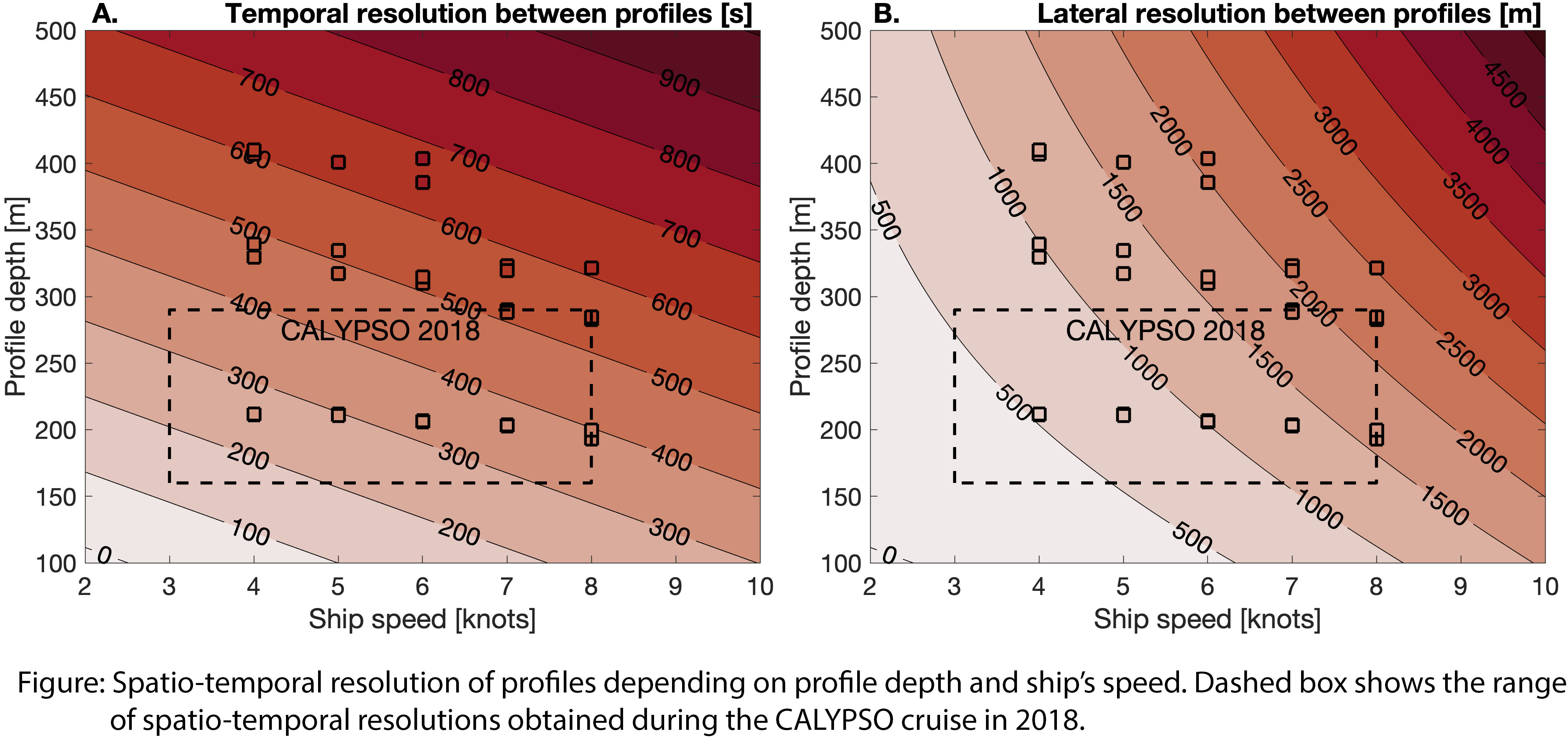
Modus Operandi
A key component of the EcoCTD is the winch it is operated from. The Teledyne UCTD winch has been traditionally used to deploy the EcoCTD, but any light-weight winch possessing the right characteristics could theoretically be used. It is important that the winch can
- Freely-unspooled faster than the targetted fall-rate. This is important to ensure that the EcoCTD is free-falling and thus decoupled from any heaving of the ship due to surface waves.
- Can spool the line relatively fast: this defines the profiling time and therefore the lateral resolution between profile. As little time as possible must be spent on the respooling of the line to minimize the turn-over time between profiles.
- The winch should be fully waterproof, as it is often operated from the fantail of the ship, and capable of operationg continuously around the clock without over heating.
When at sea, the EcoCTD would be deployed following these steps:
- The EcoCTD would be slowly lowered from the winch down to the water, just enough for the EcoCTD to drag at the water surface.
- The winch break is then released for the EcoCTD to start free-falling through the water column. A watch is started to time the profiling time in order to activate the winch break at the targetted depth of the profile.
- The EcoCTD is then spooled back to the ship by starting the winch. Once the EcoCTD is dragging a few meters away from the stern of the ship, the winch is stopped, and the break is once again released to start a new profile.
- When the EcoCTD needs to be recovered, the instrument can be slowly lifted up to the back deck, watching wave action to avoid hitting the stern of the ship with the EcoCTD.
